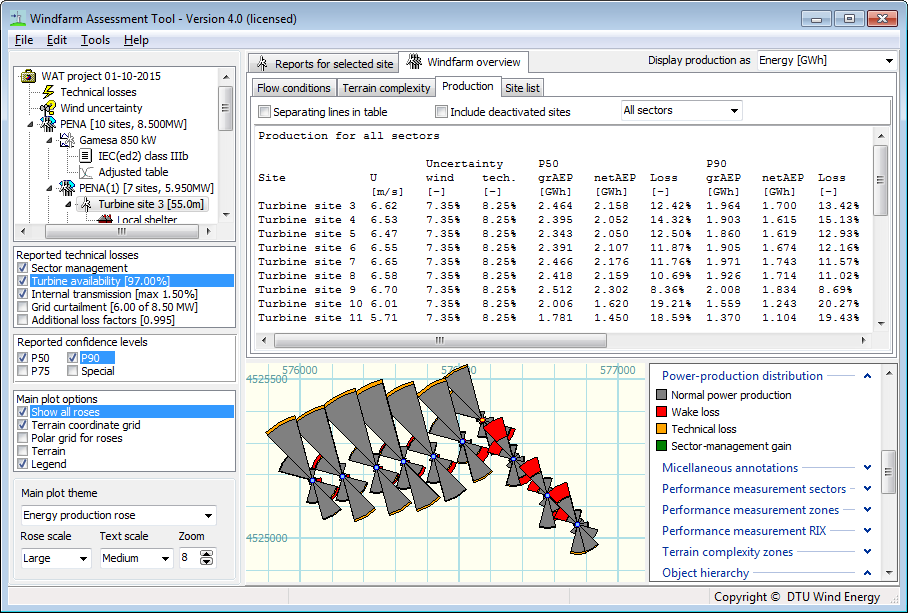Annual energy production with technical losses and uncertainty
The cost of sector management is of course lost energy production. For this purpose WAT calculates the annual energy production (AEP) by a modified version of the WAsP method, using a probability-weighted integral of power production at all wind speeds and directions. During the integration over wind direction the turbine sites are sorted after upwind distance, and AEP contributions are always calculated for upwind turbines before downwind ones. Wind speeds are corrected for terrain effects and wakes from upwind turbines before evaluating site-specific power production and thrust coefficients. AEP contributions from turbines with active sector management are either rejected or evaluated by alternative power curves. If the upwind turbine has active sector management, its wake is ignored or evaluated by an alternative thrust-coefficient curve.
Sometimes it is an economic advantage to install turbines with a slightly higher total capacity than the capacity of the transmission line. The wind farm will have to be de-rated during high-wind situations, but the AEP per turbine may still be acceptable, as turbines produce less than rated power for most of the time. There will be unused grid capacity at low wind speeds and, in case of wake loss and sector management, even above rated wind.
It is not unusual that a few turbines in a large wind farm are out of operation due to technical problems or planned maintenance. WAT models the effect turbine availability on annual production by wake modelling for various reduced sets of operating turbines and the probability distribution for the number of operation turbines.
A fraction of the power is lost in the transmission from the turbines to the point of grid connection. WAT models this loss as proportional to the square of the power in a given wind situation.
The effects sector management, turbine availability, internal transmission loss and grid curtailments are integrated in the wake modelling and the user may add additional linear loss factors, e.g. effects of grid availability.
Financial planning of a wind farm usually requires conservative estimates of the annual energy production for selected confidence levels. WAT can either handle uncertainties on the wind estimates, uncertainties of the power production, or combinations of the two kinds of uncertainties. Uncertainties on wind predictions are translated to uncertainties on power production by the modified WAsP method AEP including modified wake effects due to sector management and other technical losses.

